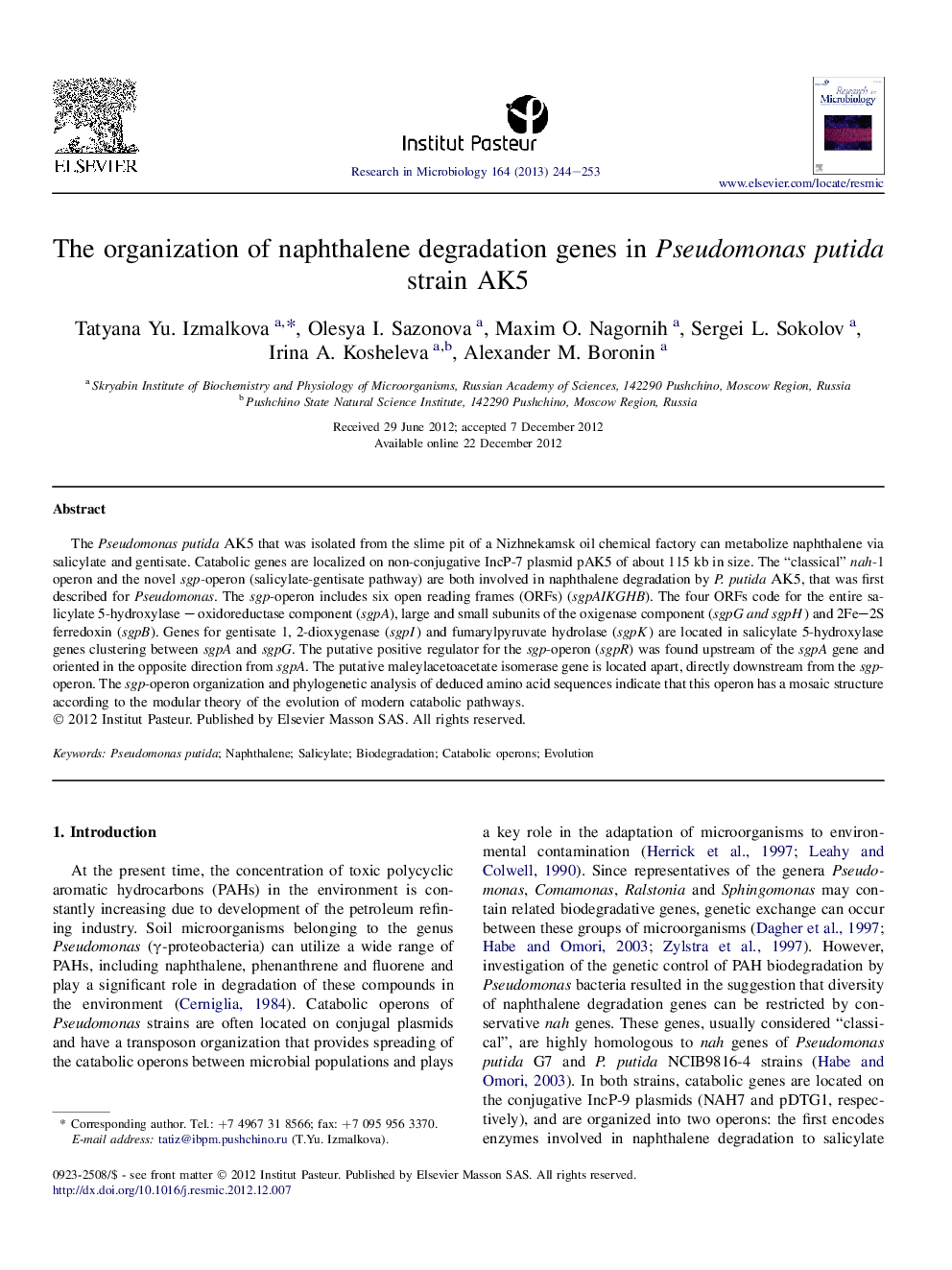| Article ID | Journal | Published Year | Pages | File Type |
|---|---|---|---|---|
| 4358486 | Research in Microbiology | 2013 | 10 Pages |
Abstract
The Pseudomonas putida ÐÐ5 that was isolated from the slime pit of a Nizhnekamsk oil chemical factory can metabolize naphthalene via salicylate and gentisate. Catabolic genes are localized on non-conjugative IncP-7 plasmid pAK5 of about 115Â kb in size. The “classical” nah-1 operon and the novel sgp-operon (salicylate-gentisate pathway) are both involved in naphthalene degradation by P. putida ÐÐ5, that was first described for Pseudomonas. The sgp-operon includes six open reading frames (ORFs) (sgpAIKGHB). The four ORFs code for the entire salicylate 5-hydroxylase - oxidoreductase component (sgpA), large and small subunits of the oxigenase component (sgpG and sgpH) and 2Fe-2S ferredoxin (sgpB). Genes for gentisate 1, 2-dioxygenase (sgpI) and fumarylpyruvate hydrolase (sgpK) are located in salicylate 5-hydroxylase genes clustering between sgpA and sgpG. The putative positive regulator for the sgp-operon (sgpR) was found upstream of the sgpA gene and oriented in the opposite direction from sgpA. The putative maleylacetoacetate isomerase gene is located apart, directly downstream from the sgp-operon. The sgp-operon organization and phylogenetic analysis of deduced amino acid sequences indicate that this operon has a mosaic structure according to the modular theory of the evolution of modern catabolic pathways.
Related Topics
Life Sciences
Immunology and Microbiology
Applied Microbiology and Biotechnology
Authors
Tatyana Yu. Izmalkova, Olesya I. Sazonova, Maxim O. Nagornih, Sergei L. Sokolov, Irina A. Kosheleva, Alexander M. Boronin,
